If you wanted to create a scary monster, the scariest ever, how would you go about it? Make it big (like an ogre). Make it invisible, so you never know when it’s there. Make it sometimes nasty, sometimes nice, like a white witch, seductive and charming, all the while scheming.
Make it unexpectedly violent. Therefore make it a woman. Worse, make it a mother. Make it a failed mother. Make it a vengeful failed mother who cooks and eats children. Make it a vengeful failed mother who eats her own children. RAW.
That, folks, is peak monster.
Actually, maybe we can go one step further and make it even worse. Make the cannibal a CHILD. Don’t blame me for that mental imagery. I didn’t invent it.

At least, that’s what I thought, until I listened to the Scale of Evil episode of Unpopular Culture podcast. At around the 20 minute mark they talk about actual instances of cannibalistic criminals in our time, and it turns out my mind hadn’t gone there.
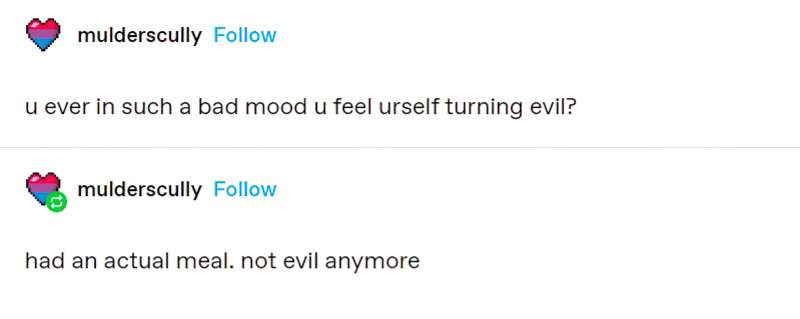
Cannibalism In The Earliest Narratives
The prohibition against eating human flesh is one of the first steps in human civilization. Cannibalism was universally accepted in the archaic world, but later started to be viewed as alien. Cannibalism is often connected with the Fall, that is the loss of immortality. In a myth, the so-called cultural hero terminates cannibalism by defeating the cannibal enemy.
Maria Nikolajeva
In one common myth a supreme deity punishes his children/spouse by cutting them into bits and throwing them down from heaven to earth or hiding them underground. Nutritious plants grow from the mutilated bodies.
An important mythical figure is the Progenitrix, the incarnation of Mother Earth, the origin of everything. In most myths, she teaches humans to sow and to bake bread.
Maria Nikolajeva
The children’s literature equivalent of the Progenitrix are parents or other adults — usually the mother.
Hence, we must interpret all scenes in children’s fiction where the mother provides food not only and not in the first place as realistic details (as a traditional female role), but as a remnant of the human notion of the Progenitrix, the source of food and thus of procreation.
Maria Nikolajeva
While the female cannibal isn’t new to pop culture, she’s relevant in ways that go beyond shock value, by capturing ever-present social anxieties about gender, hunger, sex, and empowerment. These new works center on women who, in addition to eating humans, negotiate and subvert expectations for how women should look and behave. They’re motivated by physical hunger but also by sexual desire, making them an extension of the femme fatale—the beautiful woman who deceives and ensnares men. In eating flesh, characters like Justine simply redirect this fear from the metaphorical to the physical. There’s a persistent stereotype that women will “suck men dry”; well, these ones will literally devour you.
Why Female Cannibals Frighten and Fascinate – Kate Robertson, The Atlantic, 2017
In ethnographer and folklorist Arnold Van Gennep’s book “Rites of Passage” rites of passage have three stages: separation, liminality, and incorporation. Van Gennep defined these stages as “rites of separation from a previous world, preliminal rites, those executed during the transitional stage liminal (or threshold) rites, and the ceremonies of incorporation into the new world postliminal rites.” What the coming of age horror movies Ginger Snaps, Jennifer’s Body, and Raw have in common is that they use female cannibalism to illustrate a girl’s transition into womanhood and what that transition means in a patriarchal society.
Nevertheless, She Feasted: Why Girls Get Hungry in Horror Movies by Francesca Fau · Published on January 16th, 2018
Cannibalism and the Ancient Greeks
In Greek mythology, cannibalistic acts appear to have diverse motives. It could be to avert diseases, or be motivated by revenge or hatred. Sometimes it explains cosmic events, or is the direct consequences of extreme vengeance.
Divine Hunger: Cannibalism in Greek Mythology from The Collector
The story of Tantalus is one example of a Greek story that contains cannibalism. Tantalus is invited to eat with the gods. He assumes he’s one of them now and eats ambrosia. He returns the favour and invites the gods to a feast at his own place. He tries to suck up to them and presents them with all the best food. So he serves up the flesh of his own children. (He ends up banished to Hades.)
Lamia is a fearsome fairy-ancestor character from Greek mythology whose own chances of motherhood were cut down. Naturally, if she couldn’t have children no one could. In true ancient Greek form, she became vengeful against the entire world and set about eating other people’s babies. Lamia is basically a metaphor for failed motherhood, and, I believe, ancestor to the modern burlesque witch.
Fairytales are heavily influenced by these myths. “The Juniper Tree” from the Grimm collections is an 1800s take on an ancient tale pattern — Tereus in Philomena and Procne and Ovid’s tale of Philomel. Hera, Demeter, Hades, Hestia, Poseidon (of the Olympians); Jupiter, Zeus, Saturn and Kronos (of the Romans).
CyclopEs, O.G. Cannibalistic Ogre
A Cyclops is a one-eyed monster in Greek mythology.
The main difference between a giant and an ogre: Ogres eat you. At least, Homer’s cyclopes will eat you. (See The Odessey, c. 700B.C.) Odysseus goes on this mythic journey and meets a variety of opponents along the way. At one point he meets a cyclopes called Polyphemus, who has one eye and also eats people. This particular creature ‘lives in the world of men’, so he’s basically a big man, which makes him cannibalistic, I guess.
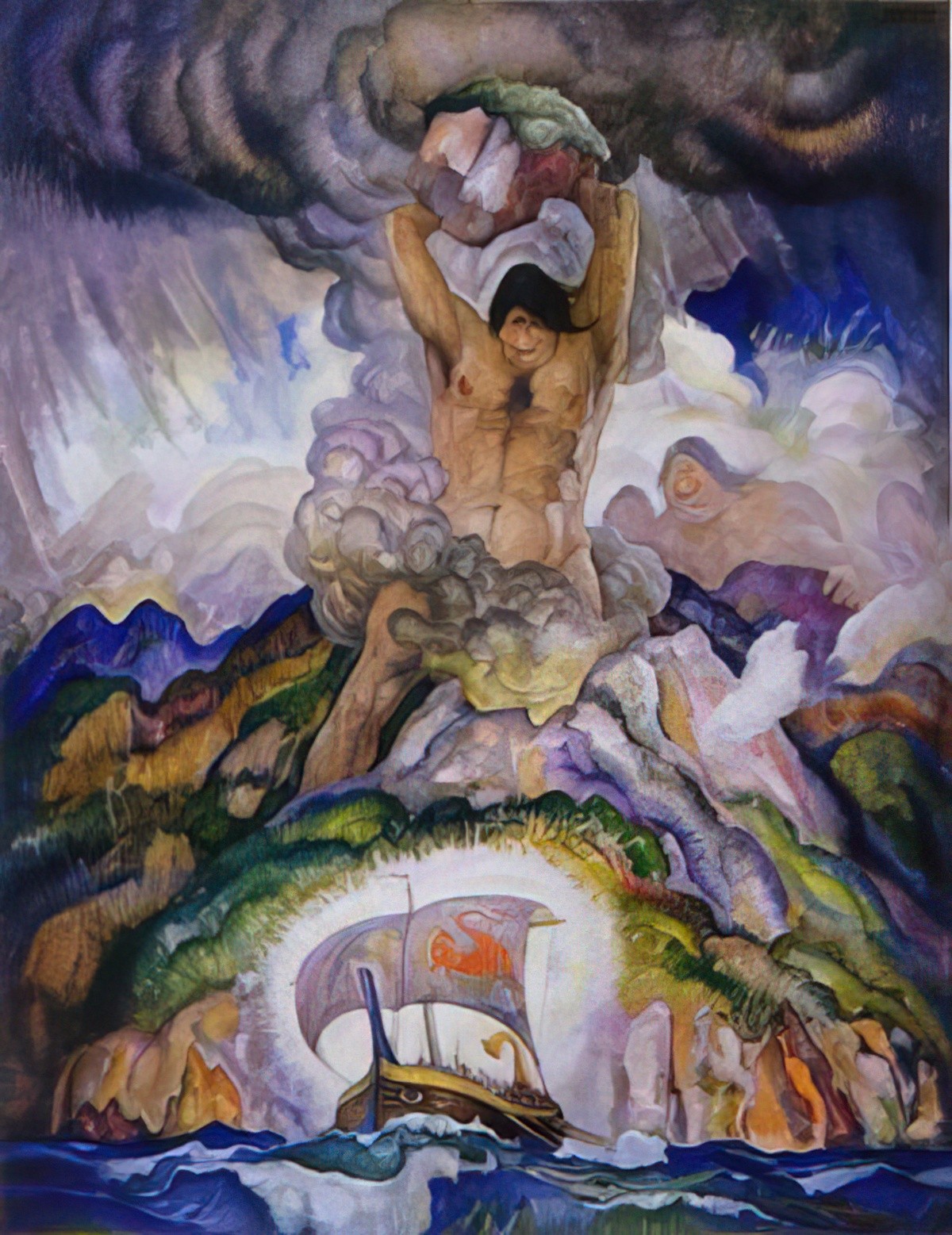

Sirens are another interesting example from Greek mythology — another femme-coded character, another cannibal, sucking the life out of others (when in reality, others are more likely to suck the life out of women by expecting emotional labour). Sirens are variously depicted as terrifying, sexually available and — in the painting by Gustav Adolf Mossa — as a scheming cannibalistic chimera (part woman, part bird), with blood dripping down her chin.

There’s something about femme coded chimeras that make people think of cannibalism. The poster below is a grim example of that.


Though there are many masculine examples of cannibalism, why is femininity so closely linked to this disturbing practice?
Marina Warner has an answer, and it’s to do with how women’s bodies are kind of disturbing. I mean, they grow other humans, inside their stomachs. (The womb is near enough to the stomach.)
The cannibal is a subject in a gendered plot in which cunning and high spirits win the day, and the boy’s own variety has eclipsed the girl’s in such stories’ transmission since the seventeenth century. Tales of the ‘Beauty and the Beast‘ cycle menace their heroines with death by engulfment, and this obliteration, where a woman’s body is in question, often means sex or childbirth.
No Go The Bogeyman, Marina Warner
Femme characters compared to food isn’t new. Look at various terms of endearment — Peach, sweetie, sugar… then there’s the misogynoir of ‘coffee’toffee/cocoa coloured eyes/skin’. There is a clear connection between various types of hunger (literal and sexual) and also between cuteness and eating. (“You’re so cute I just want to eat you up!”)

Cannibalism as Extreme Love
Maria Nikolajeva posits that cannibalism in storytelling can function as a sign of extreme love:
when a man (more rarely a woman) eats up his beloved, in order to own her completely. Here is once again a parallel between food and intercourse, oral and sexual satisfaction. In some myths, parents devour their children out of great love.
The Golden Age Of Cannibal Stories
Tamara Queen of the Goths in Shakespeare’s Titus Andronicus, which played from 1592. The 1500s were a golden era for cannibal stories, especially on the stage.
In Titus Andronicus, Titus tricks Tamora into eating a pie cooked from her own deceased sons; he does this as an act of revenge, to repay Tamora for the crimes/wrongs she has committed against Titus and his family.
Shakespeare, Gender and Sexuality
An Italian Cannibal
Gustave Doré (1855 – 1883) was an artist who had a huge influence on Hollywood film. Below is an article showing us where Chewbacca came from. Gustave Doré depicts the ogre in Furious Roland with human bodies falling out of his mouth.

First came the Greek legends of the cyclopes, then came Homer, then came “Roland In Love”, in which Roland sets off on a mythic journey in search of Angelica (the princess all the men want to marry).
As mentioned above, Odyssean mythic journeys pit the hero against all manner of opponents, and that’s what happens here. First he kills the Sphinx. Then, on Mortal Bridge, Roland enters a battle with a giant. Roland slays the giant, but in his dying moment the giant casts a fishing net and entangles Roland. Roland can’t disentangle himself and must wait for either death or rescue. A day passes, then a monk (ally) appears and offers Roland spiritual help. The chatty monk tells Roland how he has just miraculously escaped from the one-eyed ogre. Coincidentally, the ogre himself appears right there and then, trying to chop Roland with his sword. But he ends up just cutting the net. (Roland cannot be killed with weapons.) Freshly freed Roland kills the cannibal ogre, striking him in his only eye, and releases the ogre’s captives.
The Faerie Queene by Edmund Spenser
The cannibals of The Faerie Queen make an interesting example because they provide a basic template for the archetype:
Spenser’s cannibals represent an extreme of collective incivility. In them, courtesy has not merely gone awry but has been turned inside out. Their victim, Serena, is both a romantic heroine and an aspect of the social and psychological ‘serenity’ that is at issue and at risk in all places of retreat in Book VI. Unfortunately, the remoteness that fosters ease and grace also harbors barbarity. Lacking inborn human instincts and the nurtured discipline of gentlemen, the cannibals represent an organized bestiality and communal disorder.
The Spenser Encyclopedia by Albert Charles Hamilton
Hamilton goes on to describe the main characteristics of Spenser’s cannibals:
- In contrast with the Brigands (a cross between pirates and outlaws) the cannibals aren’t into trading goods and services.
- They are nomads who forage for sustenance
- They don’t seem to have a plan for what they’re going to eat next — like Cookie Monster they eat whatever lies in their path. They’re more like zombies than Evil Genius archetypes.
- In common with shepherds they do know the basics of festivity. Whereas shepherds use pipes to create shepherd songs, cannibals use horns and bagpipes to howl. This puts the reader in mind of the western Celts and the starving rebels in contemporary Ireland.
- Instead of dancing around a garlanded figure cannibals in The Faerie Queen move around a sacrificial victim in a ‘discordant and chaotic’ way.
- Basically, these cannibals represent free reign over primitive impulses.
- Like other mythical villains (such as vampires), even the cannibal gets its turn as the star of a story which sexually objectifies and violates women.
- When cannibals are especially interested in eating beautiful women, the story becomes about perverted eroticism (‘lustfull fantasyes’). First they strip her of her jewels and clothing. This strips the sexual object her of dignity and social status. He is then free to do with her as he pleases.
Cannibalism in Fairytales
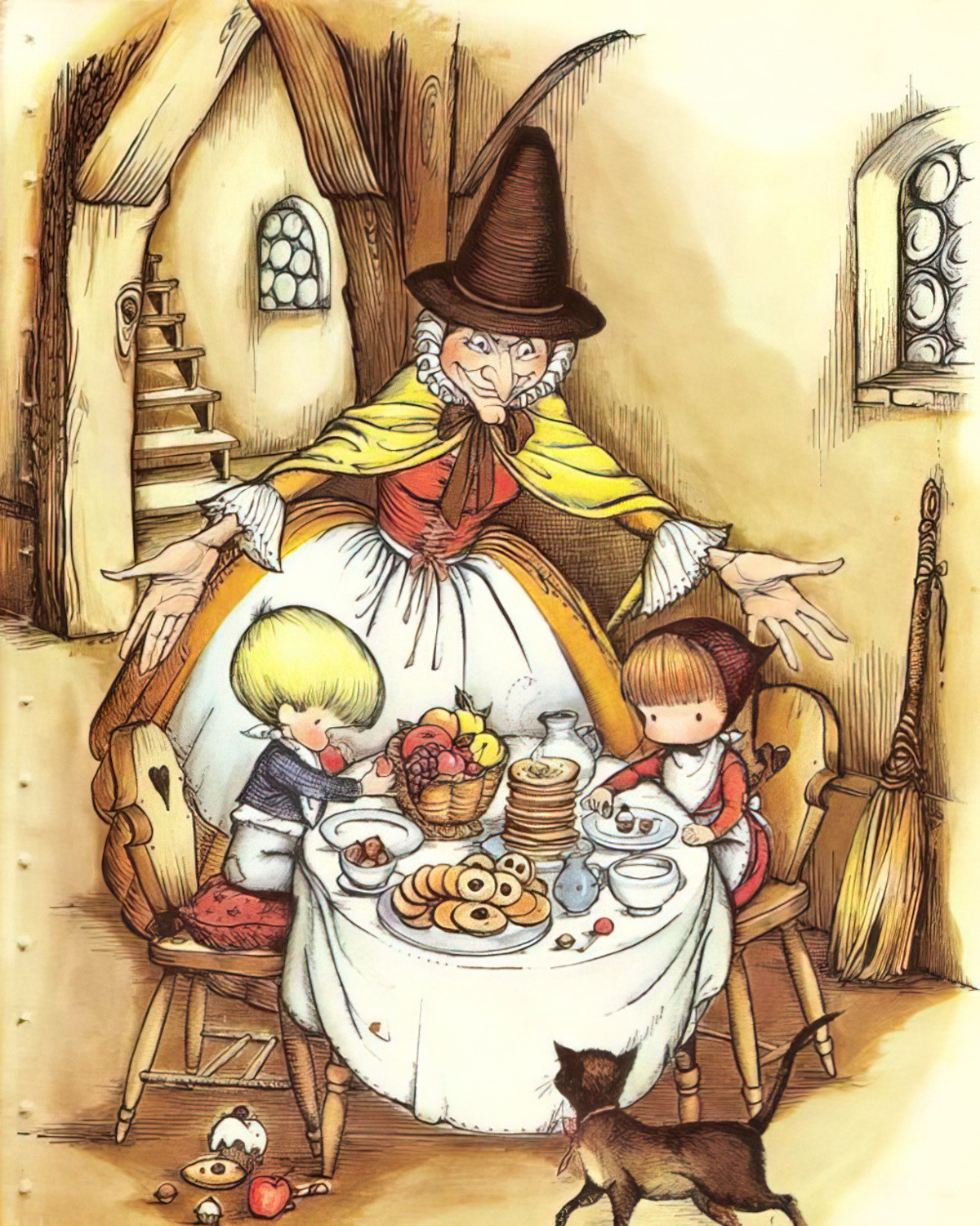

Sleeping Beauty, The Juniper Tree, Hansel and Gretel — the tales I grew up with are full of cannibalism, but I didn’t find them all that scary. Even the non-bowdlerised versions of fairytales aren’t scary because of the cannibalism per se. Sleeping Beauty and Snow White are very similar tales at their core and in both of those you’ll find a cannibalistic grandmother (witch) figure — both are frustrated in their desire to eat offspring, but they both wanted to. You’ll have to go back to the Perrault versions to get the juicy cannibalistic bits — the stories tend to leave out part two of Sleeping Beauty for a young, contemporary audience.
Jack and the Beanstalk features a giant in a castle in the sky who wants to eat Englishmen, grinding their bones to make bread. Many cannibals have been ostracised from civilised society and live in the forest, but there’s another type of ‘ogre’ who lives in a castle. Jack and the Beanstalk is a good example of that kind.
Perhaps that’s because, in the realm of fairytale, being eaten by someone doesn’t necessarily mean you’re dead. Fairytale monsters don’t seem to chew. They have unusually wide oesophagi. Nor do they have stomach juices which would kill you anyway. Somehow, creatures can still breathe inside their stomachs. (Perhaps their lungs are connected to their stomachs via ventilation pipes? Who knows. In any case, there are numerous fairytales in which cannibalised characters break out of the villain’s stomach and emerged unscathed. Some versions of Little Red Riding Hood end in this way. In some versions of Little Red Riding Hood end with the cannibal joke in which Little Red Riding Hood eats her own grandmother.
Either that, or characters in fairy tales often foil cannibalism. Examples are Tom Thumb (see Hop-o-my-thumb) and Hansel and Gretel.
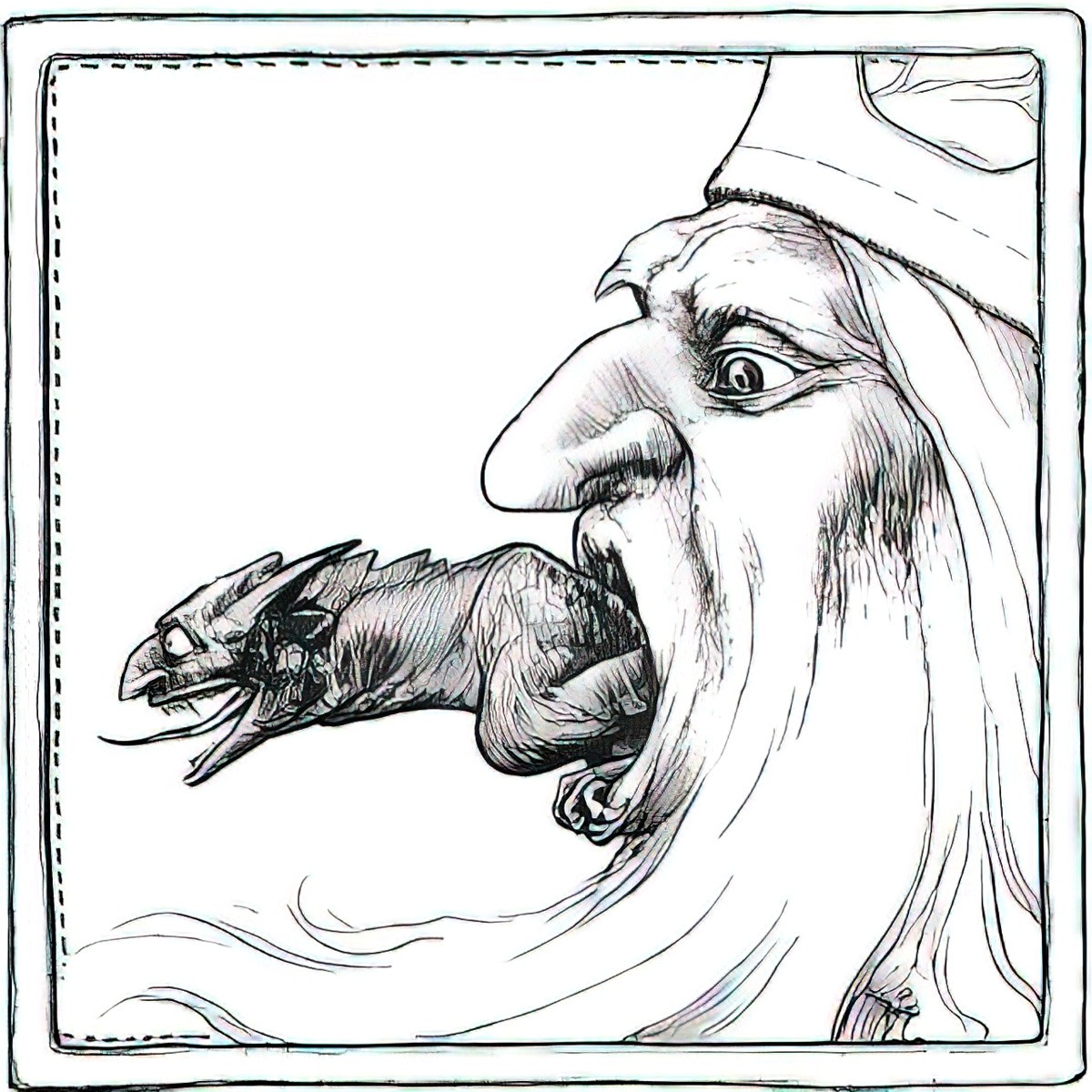
The truly scary fairytales are those in which a mother eats her own children. In bowdlerisations, mothers are turned into step-mothers — the thought of your own mother eating you up is one step too terrifying.
Cinderella is an especially interesting example of fairy tale cannibalism. The version you were told as a child probably didn’t include any cannibalism but if we go back to the Chinese and Romanian Cinderella stories, in both cases the wicked stepmother kills Cinderella’s spirit animal and serves it up as meat.
Cannibalism in Burlesque
Stories featuring cannibalism are often an indicator of burlesque sensibility. To be eaten up is the ultimate humiliation, and depending on the tone of the story, also the most ridiculous thing that can happen.
Mark Twain’s 1868 short story “Cannibalism In The Cars” makes use of unexpected register when Twain’s narrator uses the vernacular and mannerisms of a politician rather than of a common man.
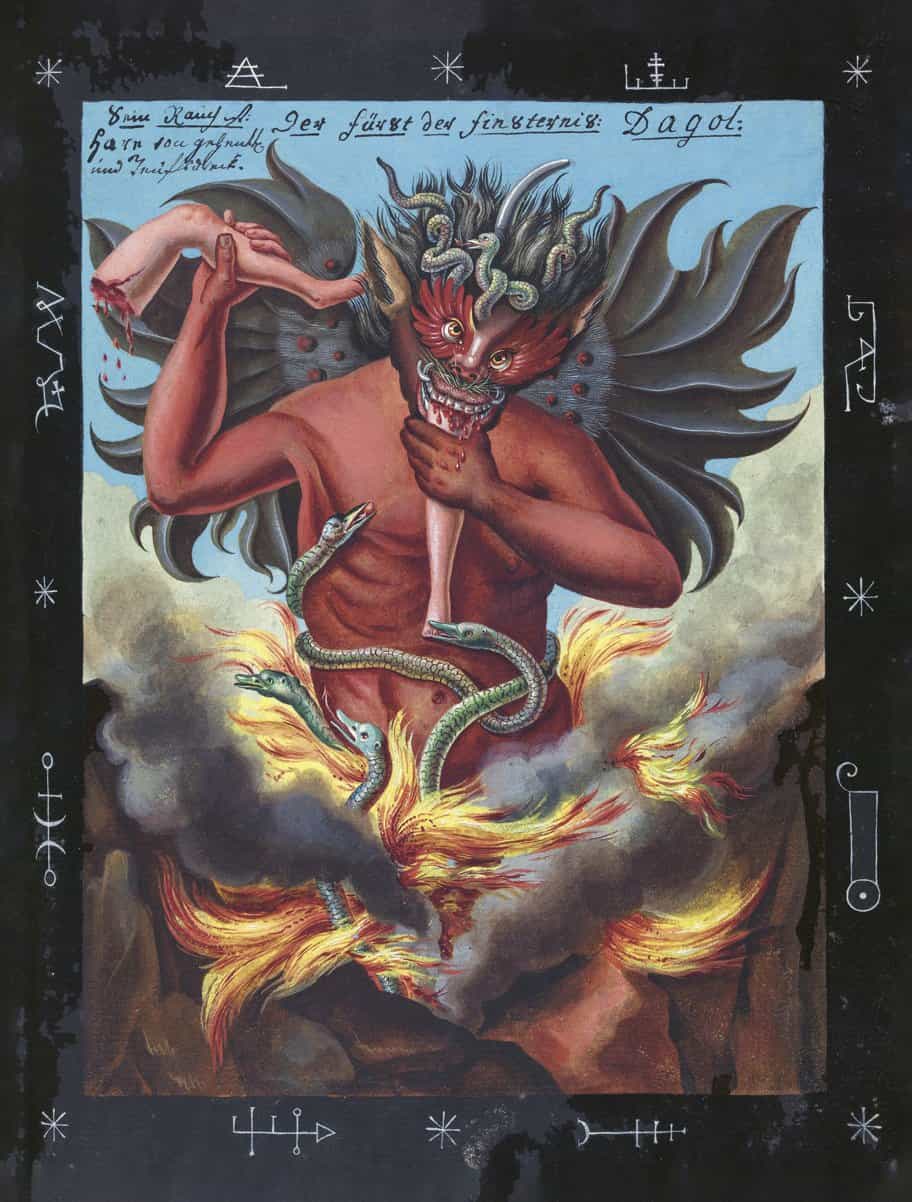
Cannibalism in Early Travel Narratives
When explorers from Europe started contemplating, then discovering, other countries and continents the narratives around these travel stories tended to depict new settings as a weird blend between distant utopias and lands full of dangerous savages who’d eat you given half a chance. That’s quite a juxtaposition, but it served Europeans well: Nature is benevolent, we should definitely invade. But the natives are savage and inhuman, we should definitely invade.
Cannibalism Accusations as Othering Tactic
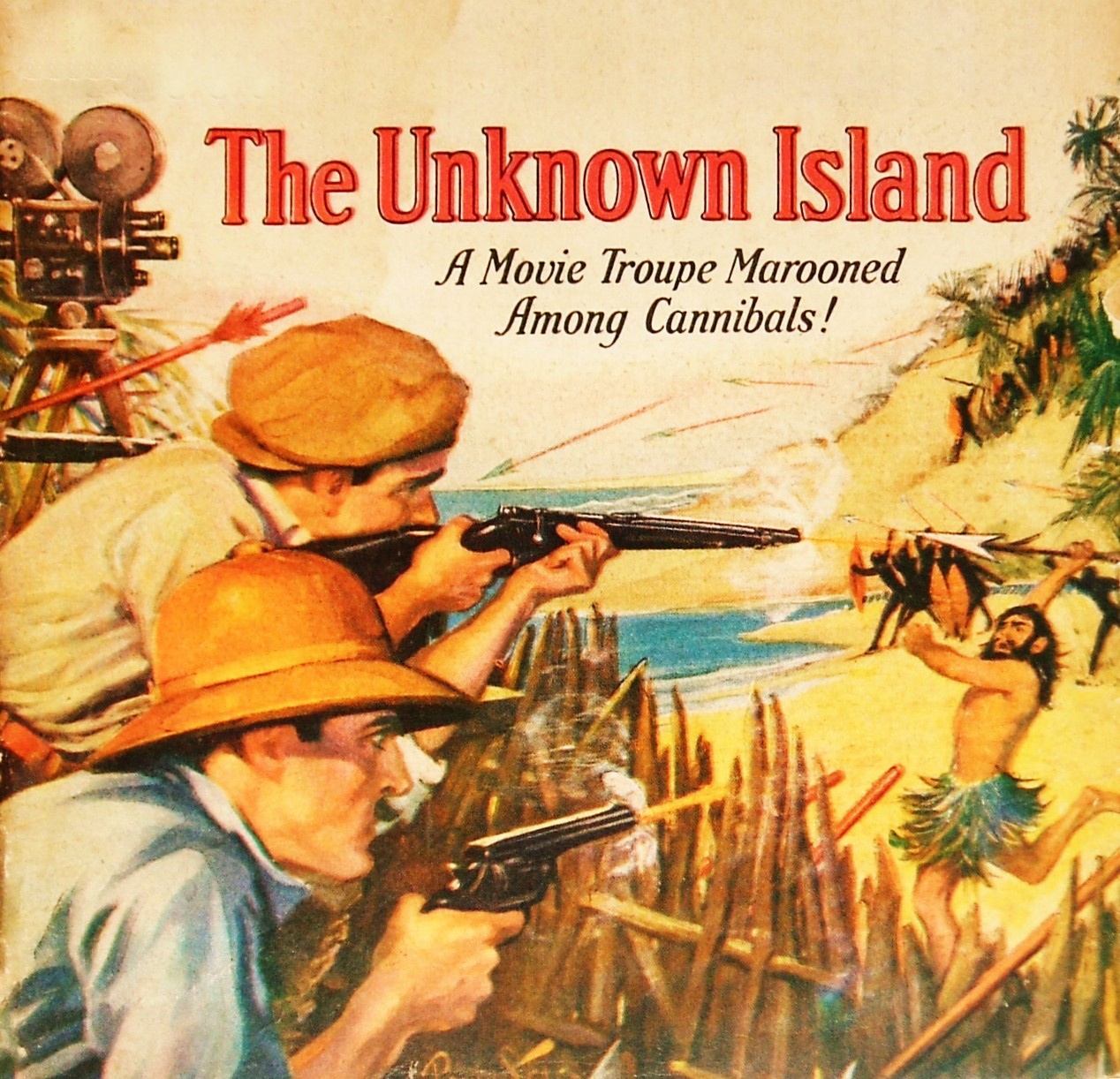
Traditionally, cannibalism as a character trait is a handy shorthand for “this is the Minotaur villain“, the villain you are meant to fear, dread and hate.
But as Robert McKee said in his book Story, “If I were a cannibalistic psychopath, I’d want to be just like [Hannibal] Lecter.” Even cannibalism can be overridden as an evil attribute when a character is deliberately written sympathetically.
To this end, the metaphor of the cannibal has been used problematically by psychologists, for example when attempting to change someone’s sexual orientation. The following is from a book from 1985:
When a man tells me he is experiencing strong desires for another man, I immediately ask him: “What specifically do you admire in this person? Right off the top of your head, what would those things be?” Invariably, in such cases . . . what they admire in the other man will be their own unaffirmed characteristics, those from which they are separated, can in no way see, and therefore cannot accept as part of their own being. These attributes they have projected onto another person . . . Cannibals eat only those they admire, and they eat them to get their traits.
Crisis in Masculinity (1985) by Leanne Payne
Leanne Payne’s ideas are used in the movie adaptation of The Miseducation of Cameron Post, in which the main character imprisoned at a gay conversion school is told that she is in love with another girl because she admires and wants to be the other girl.
This abusive idea probably derives from the mythological cannibals, who eat others because they are incomplete. Femme coded cannibals eat babies because they themselves are ‘failed mothers’. (See Lamia, Lilith, Lamashtu, Avenzuha the wing of Satan.) Eating someone else is one way of achieving completion. (Incompletion is seen as very dangerous according to ancient thought.)
The meaning of cannibalism is that by eating up your enemy you inherit his powers. There exists a habit of eating up the eldest man in the tribe to inherit his wisdom. Later this changes into ritual meals. To eat a symbolical figure signifies receiving magical power. To eat and be eaten are two interchangeable notions, which is seen in the Christian tradition’s most important sacrament, the Holy Communion. Jesus prescribed that His “body” be eaten, symbolizing a union of those who eat and Him who is being eaten, which together signifies a victory over death and a promise of resurrection.
Maria Nikolajeva
Cannibalism and Sex
It is well established that food and sex are linked in children’s literature — not in a creepy way; instead of sexual pleasure, children enjoy the pleasures of food.
In storytelling, the other way to make yourself complete is to have sex with someone (or do sex to someone). Creatures most at risk of becoming cannibals and rapists have gotten themselves stuck in some kind of transitional phase: commonly between life and death.
Did mothers ever eat their own children in real life?
[H]unger in fairy tales reveals its keen edge even more clearly against the historical background. Actual orphans and fairy tale foundlings coexisted in the eighteenth-century culture, and food was stodgy and often scanty.
Marina Warner
The most egregious form of cannibalism is when a mother eats her own children. But where did this trope come from? Did this ever really happen? After all, if people are hungry enough…
Maria Tatar has said that although mothers did, in history, occasionally eat their children, it was generally only due to mental derangement caused by their own starvation. In medical/legal documents it was always a baby who was eaten rather than an older child. The child eating mothers of yesteryear are therefore mostly a myth, but have captured the public imagination and been incorporated into oft-shared tales, much like an urban legend of today.
Contemporary cannibals, tried for the crime, are almost all men. This is a heavily gendered crime, much like pyromania.

Cannibalism In Papua New Guinea
Surely because cannibals do actually exist, not all supernatural stories of cannibalism are considered fiction.
Witches are figures of unmitigated hunger or greed. At night, they feed on the internal organs of persons or pigs, eating livers, hearts, lungs, and brains. They may feed on the recently deceased so participants in funerary proceedings are therefore suspicious of persons who loiter near grave sites. An intense and covetous gaze is a further sign of nefarious intent, as witches can see into the bodies of their victims.
Becoming Witches
This is because in Papua New Guinea, witches can apparently see inside people, to our organs. Here goes the logic: Wouldn’t you be constantly hungry if you were looking at meat all day?
In fact, the presence of gwumu inside persons fundamentally changes their perception of the world, allowing them to peer beyond conventional appearances or external reality. They may see through the skin to the human vitality embodied in organs and blood, stimulating hunger.
Becoming Witches

CANNIBALISM IN COMEDY
Like anything taboo and shocking, cannibalism makes excellent comedy fodder. The following is from an episode of The IT Crowd, in which the comedy sequence begins with the double meaning of ‘cook with you’, and a naive comedic character (Moss) who doesn’t realise his opponent’s intentions. Comedy also derives from the social niceties displayed by the cannibal, in contrast to the heinous nature of his desires.
A quirk of the English language is the broad range of meanings in the word ‘have’. This leads to idiomatic expressions such as ‘have someone for dinner’. The word ‘for’ works similarly. The unintended cannibalistic meanings are regularly mined for comedy. The IT Crowd episode is one example; another picture book example can be found in Guess Who’s Coming For Dinner? (This is one of my favourite picture books of all time.)
THE URGE TO EAT CUTE
Cuteness often elicits a reaction that appears aggressive on its surface. It is expressed as clenched fists, bared teeth and the utterance of something like, “You’re so cute I could eat you up!”
Dr. Oriana Aragon, a psychologist at Clemson University, has studied this cute aggression: the desire to bite, squeeze, or eat something because it’s so cute.
It’s common — in fact, there are phrases to describe this feeling in many different languages. One is the Tagalog word gigil, which means the gritting of teeth and the urge to pinch or squeeze something that is unbearably cute. It’s one of those excellent words that says in one what takes many to say in English.
So even though you might say you might want to eat something cute, you’re not actually feeling aggression — you’re just expressing it.
This is called dimorphous expression — when you express something different than what you’re feeling. The same thing happens when you cry when you’re happy or laugh when you’re nervous.
Dimorphous expression is also behind another common reaction to cuteness. This one expresses as sadness: It involves the sound “awww” and an exaggerated frown.
So when you see something cute, you’re filled with positive feelings, but they can come out looking like aggression or sadness.
The Science of Cute by Molly Bloom
Marina Warner, in No Go The Bogeyman, offers further examples of cannibalism in storytelling, beginning with some very old tales:
I also offer:
THE MODERN REAL LIFE CANNIBAL
While we still see actual cannibals in contemporary stories, we’ve now got another kind of monster who functions in the same way: the pedophile or child abuser. Whatever we say about him, we can also say of the ancient cannibal.
CANNIBAL AS METAPHOR
Overall, when storytellers talk about being eaten and eating others, they are telling a story about loss of self, of being subsumed.
If I didn’t define myself for myself, I would be crunched into other people’s fantasies for me and eaten alive.
Audre Lorde

FURTHER READING
- The Wikipedia article Cannibalism in Fiction
- Cannibalism In Popular Culture describes the main ways in which storytellers utilise the trope of cannibalism: As a cultural norm, as a means of survival, unaware cannibals, sensual cannibalism, as an accompaniment to killing and for some science fiction reason.
- My analysis of The Silence of the Lambs. When interpreted in the context of the very real history of gay conversion therapies, as promoted by Leanne Payne et al, attributing cannibalistic tendencies to a queer villain suddenly looks problematic.
- A Glossary of Zombie Words
- Lamb to the Slaughter by Roald Dahl, which is for adults but studied in high schools around the English speaking world. (Is it just a coincidence that lambs keep coming up? Is it because lambs are delicious?) Dahl took a macabre delight in cannibalism and other deviance. (Most of it came out in his short stories for adults, but he gave children a taste.)
- A contemporary take on the cannibal fairy tale — and a hugely successful one at that — is the picture book Guess Who’s Coming For Dinner? If you’re a picture book author, how do you get away with cannibalism in today’s market? The pig and the goose are an excellent case study: In a Rosie’s Walk style of hero obliviousness, they have no idea that they’ve caused the downfall of the wolf (the wicked witch stand-in), and that he’s about to be consumed by his wolf cronies. In other words, you can cause cannibalism — just make it comical and make it accidental.
- The BFG by Roald Dahl, in which Sophie (and therefore the child reader) is terrified of being eaten by giants. This is straight out of fairytale.
CANNIBAL TROPES AT tv TROPES
7 Quirky Cannibal Films For The Santa Clarita Diet Fan from Fandom
Dr Karl: Why isn’t cannibalism more common? from ABC Science

Eaters of the Dead: Myths and Realities of Cannibal Monsters
Spanning myth, history, and contemporary culture, a terrifying and illuminating excavation of the meaning of cannibalism. Every culture has monsters that eat us, and every culture repels in horror when we eat ourselves. From Grendel to medieval Scottish cannibal Sawney Bean, and from the Ghuls of ancient Persia to The Texas Chainsaw Massacre, tales of being consumed are both universal and universally terrifying. In this book, Kevin J. Wetmore Jr. explores the full range of monsters that eat the dead: ghouls, cannibals, wendigos, and other beings that feast on human flesh. Moving from myth through history to contemporary popular culture, Wetmore considers everything from ancient Greek myths of feeding humans to the gods, through sky burial in Tibet and Zoroastrianism, to actual cases of cannibalism in modern societies. By examining these seemingly inhuman acts, Eaters of the Dead: Myths and Realities of Cannibal Monsters (Reaktion Books, 2021) reveals that those who consume corpses can teach us a great deal about human nature—and our deepest human fears.
New Books Network
Why Was The Dutch Prime Minister Johan De Witt Murdered and Eaten? by Carl Seaver at History Defined

